Supporting Aviation Customers: COMET + The NWS Aviation Program
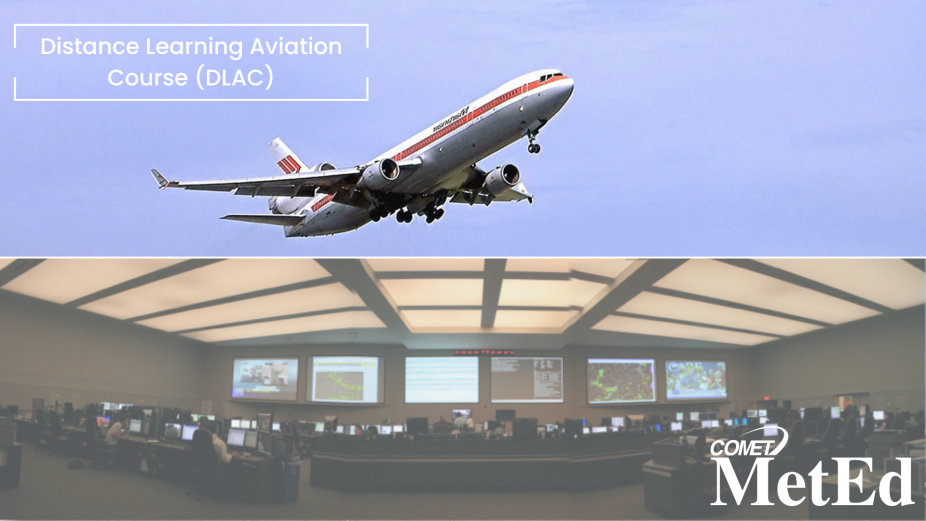
Weather is the leading cause of delays within the U.S. National Airspace. Safe and efficient aviation operations depend on timely, accurate, and clearly explained weather information and forecasts. Our COMET Distance Learning Aviation Course (DLAC) is required training for all National Weather Service forecasters and covers key topics vital for aviation weather decision support.
Aviation Weather Forecasting
Imagine you’re booking a flight for an upcoming trip. To do this, you might pull up a booking site to compare flight times and costs across airlines, plan how much luggage you’ll need, and consider if you’re really able to handle that 8-hour layover or redeye flight. As much planning as you put in, however, many of us typically overlook the most important factor for a safe and successful trip – the weather.

Flight delays due to weather conditions may compromise even the most carefully planned trips.
Fortunately, the National Weather Service Aviation Program has our backs. Staff in this program are trained to understand the importance and impacts of key aviation weather hazards to flights and airport operations. They also know how to forecast those hazards and how to coordinate the forecast information with those making the decisions on whether to delay or cancel flights due to weather.
How do we know this? The COMET Program develops and provides this vital training with the NWS Aviation Program.
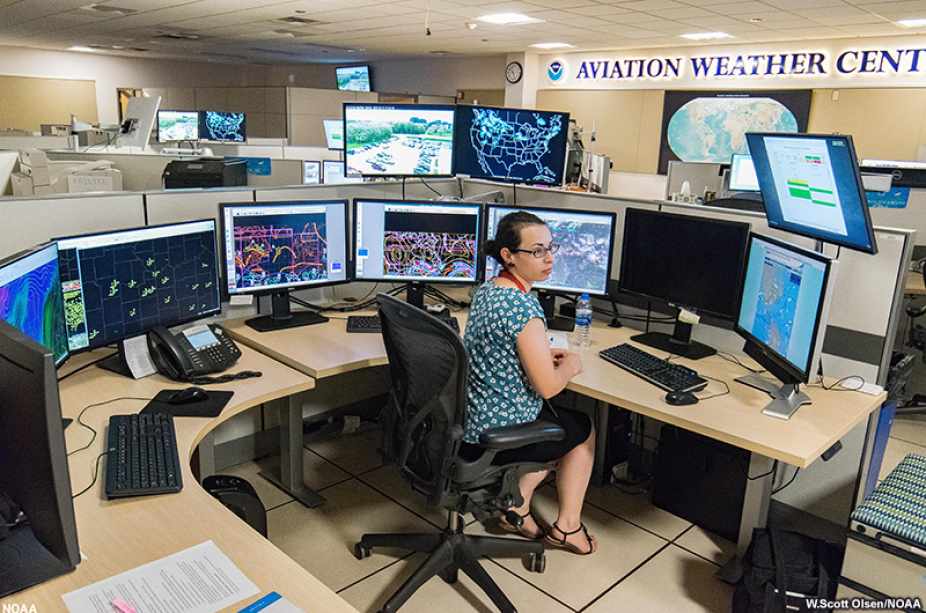
A photograph taken inside the National Weather Service Aviation Weather Center. Senior Meteorologist Amanda Martin is featured.
Distance Learning Aviation Course (DLAC)
The COMET Distance Learning Aviation Course (DLAC) is the capstone to our four-year project with NWS Aviation weather forecasters as well as experts from various aviation programs, such as Weather Forecast Offices (WFO), Center Weather Service Units (CWSU), Aviation Weather Center (AWC), Air Traffic Control System Command Center (ATCSCC), and the Aviation and Space Weather Services branch of the Analyze, Forecast and Support Office (AFSO).
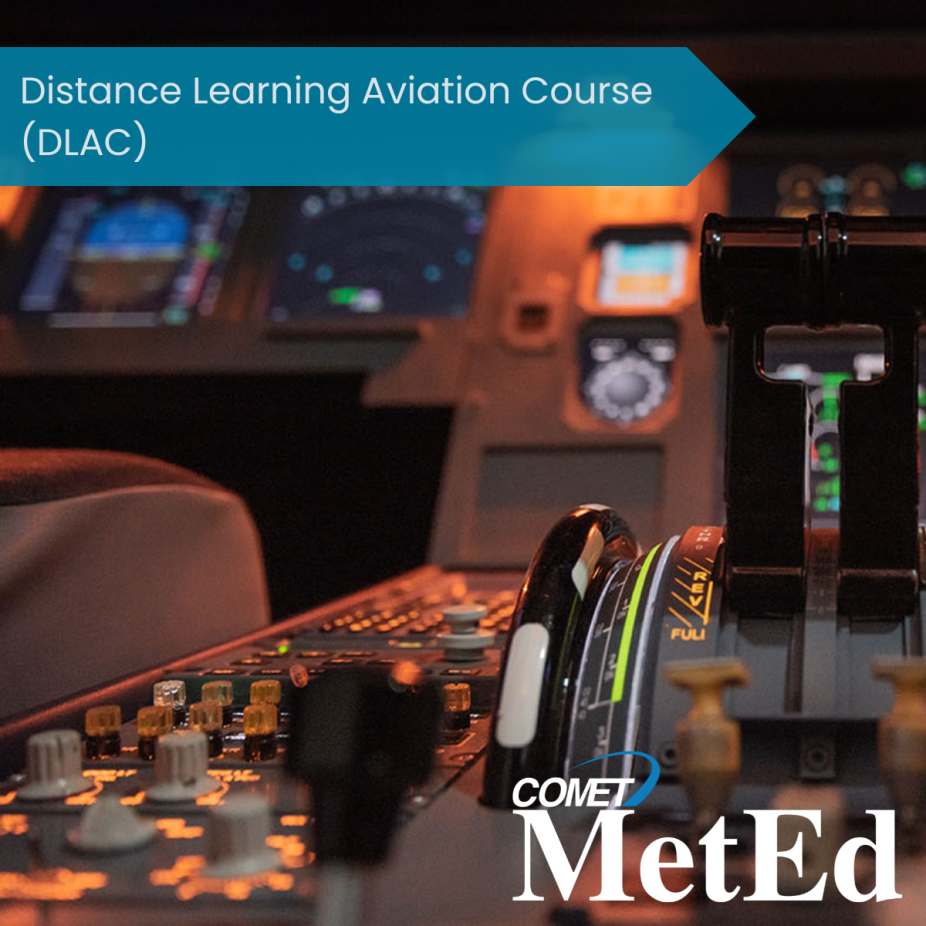
The COMET® MetEd Distance Learning Aviation Course provides all National Weather Service (NWS) operations forecasters with the training they need to support aviation customers.
This updated (and free to all) course is required training for all National Weather Service (NWS) employees involved in aviation forecast operations, per the NWS Aviation Meteorologist Training and Competencies Instruction Directive (NWSI 10-813).
Why Is this Training Important?
A dizzying array of information gathering and analyses, discussions, and more goes into flight planning. Our DLAC course is designed to train forecasters on how to provide clear and detailed weather forecast information to support effective decision making by aviation customers.
For example, all NWS employees involved in forecast operations must understand the general infrastructure, roles, and responsibilities of NWS aviation programs as well as the needs of external stakeholders including the Federal Aviation Administration (FAA), commercial airlines, and general aviation.
Forecasters also need to know how to create, interpret, and collaborate across a variety of forecast products used extensively within the US National Airspace System (NAS).
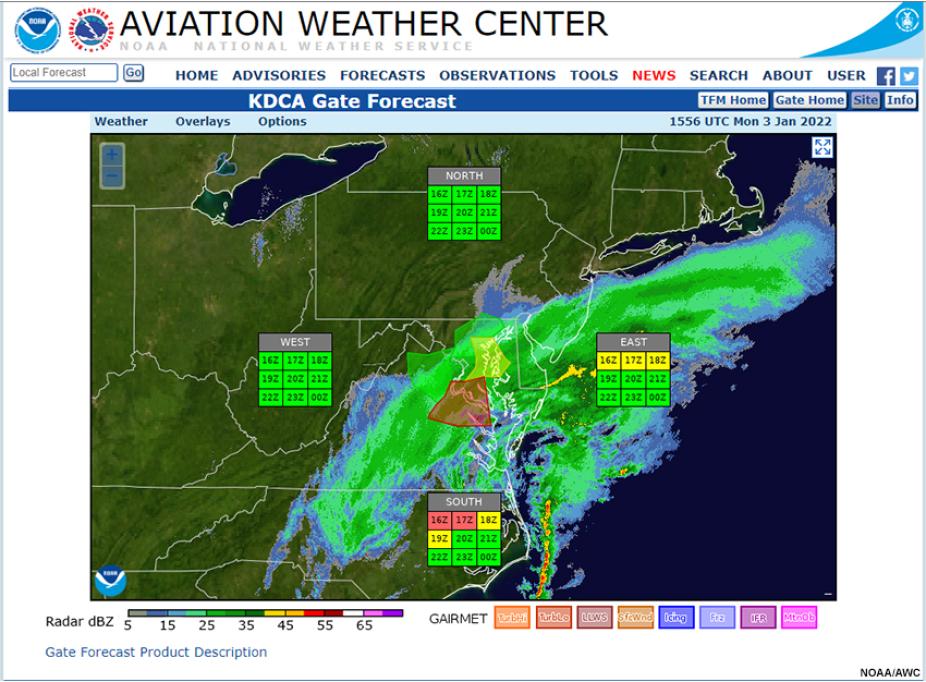
Understanding various forecast products, such as this NWS Aviation Center gate forecast example, is essential for forecasters.
This requires baseline knowledge of critical aviation observations and forecast tools, as well as key products such as the Terminal Aerodrome Forecast (TAF). Forecasters must also understand the importance and impacts of key aviation weather hazards, how to forecast those hazards, and how to coordinate the forecast information for decision-making purposes within the National Aerospace System (NAS).
What’s in the Course?
This may sound like a lot for forecasters to know and keep track of—and it is. Fortunately our fully-updated, 11-lesson course takes learners through all of these processes while also setting them up for success by applying their knowledge to real forecast situations.
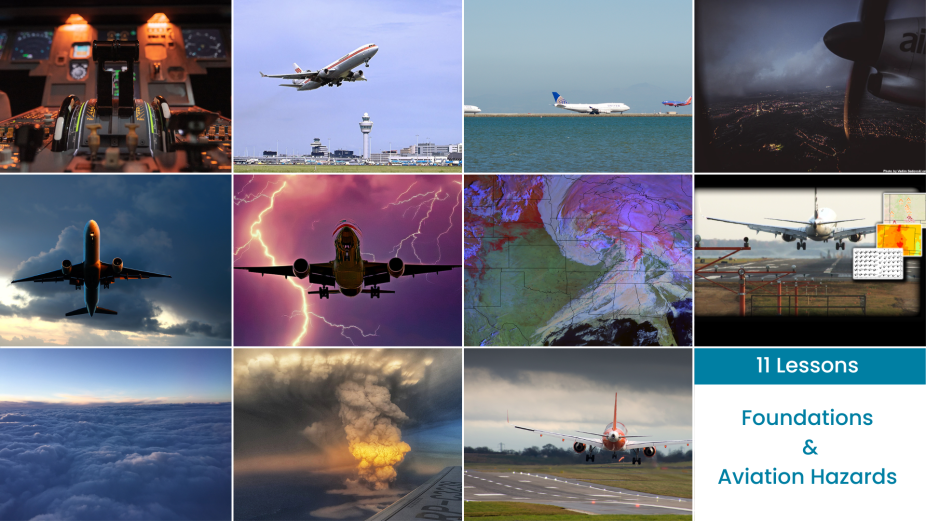
The DLAC course provides a strong foundation of forecasting processes before guiding learners through aviation hazards.
Our team of educational design experts and scientists ensures each lesson is scientifically robust and designed to enhance learner engagement, comprehension, and retention. This includes taking learners through real-world scenarios, making learning fun through gamified interactions, and more.
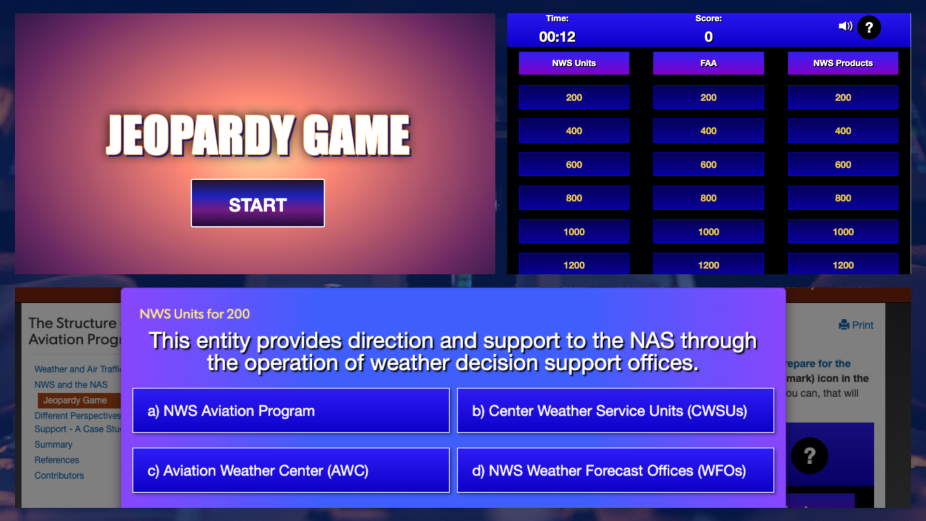
Bonus: If “aviation weather decision support” is ever a Jeopardy® category, you’ll be ready.
The course is divided into two parts: Foundations: Aviation Products and Programs, and Aviation Hazards Overview, and takes about 12 – 15 hours to complete, depending on the learner. Here’s the course outline:
Foundations: Aviation Products and Programs
- The Structure of the NWS Aviation Program
- TAF Essentials: Encoding and Standards
- TAF Essentials: Customers and Decisions
- Meteorological Observations for Aviation Forecasting
- Meteorological Analysis and Forecast Tools for Aviation
Aviation Hazards Overview
- Aviation Hazards: Thunderstorms
- Aviation Hazards: Low Ceilings and Reduced Visibility
- Aviation Hazards: Turbulence
- Aviation Hazards: Icing
- Aviation Hazards: Volcanic Ash
- Aviation Hazards: Low-level Wind Shear and Low-level Turbulence
Create or log into your (free!) MetEd account for a deeper dive into the course overview, objectives, and resources here.
Stakeholder and Learner Experiences with DLAC

Reading your feedback is one of our favorite things to do.
We’re thrilled to share that our stakeholders and learners have had positive experiences with the DLAC course since the release of its individual lessons throughout 2024 and course package in 2025.
“Another lesson, another great job – this one really captured some aviation nuances that most in the field would not have realized.”
– An NWS aviation headquarters staff member
“As a seasoned aviation forecaster, the new material, science and case studies have greatly helped sharpen my forecasting skills. I have a better understanding of Low Level Wind Shear vs. Low Level Turbulence now than when I did when I forecasted it every day!”
– An Aviation Services Training Program Manager
“COMET understands the needs of the aviation community, and works with experts from the field to give students a well rounded and detailed understanding of aviation hazards.”
– An Aviation Services Training Program Manager
In addition, MetEd user ratings for all lessons are currently either 4.0 or 4.5 out of 5 stars, with users noting, “very good course explaining how TAFs are issued,” and “all pilots will find value in this course, highly recommend.”
Work with COMET
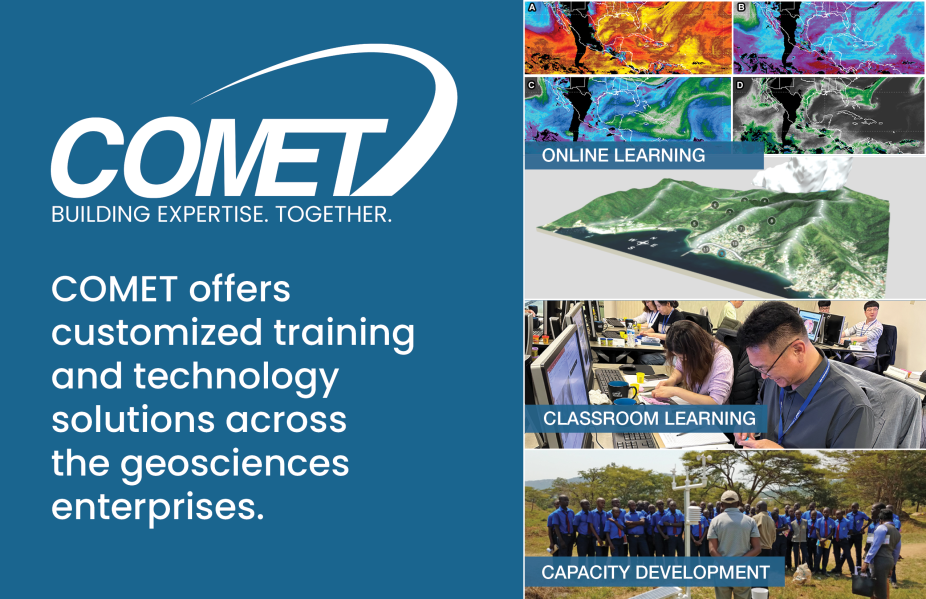
The COMET® Program offers innovative education, training, and technology solutions to build expertise, together.
The COMET® Program has been supporting the atmospheric and geosciences community since 1989. During our 35-year career, we've developed an extensive portfolio of services across various education, training, and capacity development capabilities.
Learn more about how we build expertise with our partners and how you can work with us here.
Ready to get started? Reach out to WorkWithComet@comet.ucar.edu.
Follow our Journey
Subscribe to our newsletter!
Follow us on social media: